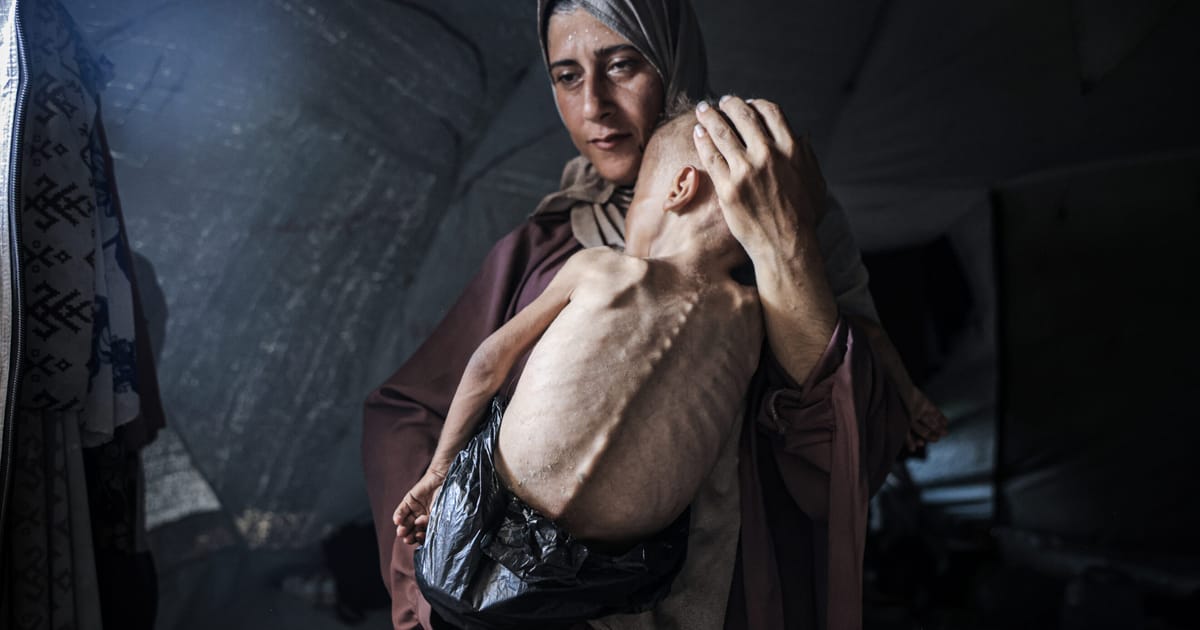

The global landscape of 2025 is painted with conflicts that are drawing profound humanitarian concerns and diplomatic tremors. The ongoing situations in Gaza and Ukraine are chief among these crises, affecting numerous lives and stability across regions.
In the Middle Eastern enclave of Gaza, the humanitarian crisis deepens as reports pour in of severe malnutrition and starvation among civilians. Recent figures indicate that over a hundred people have succumbed to starvation due to a significant scarcity of aid, highlighting the dire living conditions. Ursula von der Leyen, amongst other global leaders, has described the situation in Gaza as ‘unbearable’ with humanitarian aid efforts becoming increasingly obstructed.
The tension underscores the struggles of U.N. agencies in mitigating the crisis as attempts to deliver aid face continuous hurdles. Facilities run by the World Health Organization in Gaza have faced attacks, aggravating fears that the region is on the brink of a complete humanitarian collapse, as expressed by the U.N. Secretary General, António Guterres. Meanwhile, the head of the U.N. Palestinian Refugee Agency vividly calls the distribution points for aid a “sadistic death trap,” encapsulating the perilous challenges faced by those trying to alleviate suffering on the ground.
Volunteers and medical personnel stationed in the crisis zone, such as Prof. Nick Maynard from Oxford University Hospital, narrate harrowing accounts from their experiences. Operating at Nasser Hospital in southern Gaza, he witnesses the severe ramifications of malnutrition firsthand among both young children and infants. The pervasive shortages have rendered these humanitarian professionals almost powerless to curb the spiraling situation.
Concurrently, diplomatic maneuvers are also at play on another front as tensions between Russia and Ukraine exhibit moments of promised de-escalation. Despite an agreement on peace talks hosted in Istanbul, the enduring conflict remains evident as Russia launched 42 drone strikes on Ukrainian territory, injuring several, mere hours after agreeing to negotiate. Such incidents lay bare the complexities and unpredictability of ongoing peace dialogues which aspire to bring about stability but face hurdles along the way.
A broader perspective reveals a concerning trend regarding Russia’s strategy involving its youth in the war effort against Ukraine. Investigations have shown systematic efforts to engage children in the development and deployment of military technologies, a storyline that is as concerning as it is multifaceted, reflecting deeper societal impacts of the ongoing conflict.
Meanwhile, in the political corridors of power, former President Donald Trump has attempted to exert influence with a warning to Russian leadership, setting an ultimatum for a ceasefire by September. The efficacy of his statements in altering the trajectory of the conflict remains to be seen, but such diplomatic interactions are likely to ripple across international discourse.
Furthermore, these international dynamics are accompanied by an ever-growing global chorus condemning the violence in Gaza. Prominent leaders and organizations articulate their disapproval of the acts against civilians, urging for a conscientious approach to resolving the humanitarian and military dimensions of these crises.
Thus, as the world watches and waits, the hope for peace persists in the midst of adversity. The situations in Gaza and Ukraine represent complex challenges that beckon thoughtful resolution, cementing the importance of global unity and humanitarian support in trying times.
Source: {link}
